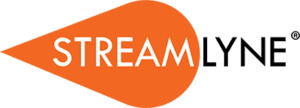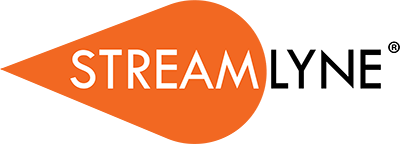
Not every researcher has the luxury of working at a major research institution with dedicated grant support staff and institutional subscriptions to comprehensive databases. Independent researchers, adjunct faculty, consultants, and scholars at smaller institutions face a unique challenge: they need to compete for the same funding as researchers with robust institutional support, but without access to the same resources.
This is where the right grant software tool can level the playing field. Today’s best platforms offer individual subscriptions that put enterprise-grade discovery and matching capabilities directly into the hands of researchers who need them most.
The Unique Challenges of Independent Grant Seeking
When you’re seeking grants without institutional backing, every aspect of the process becomes more difficult. You don’t have research administrators helping you identify opportunities or providing feedback on proposal strategies. You can’t easily leverage institutional overhead rates or existing infrastructure in your applications. And most frustratingly, you probably don’t have access to the comprehensive grant software tools that researchers at major universities take for granted.
The grant landscape itself has become increasingly complex. Federal agencies now offer hundreds of distinct programs, each with specific eligibility requirements and deadlines. Private foundations release funding opportunities on their own timelines, often with limited visibility. Corporate sponsors may not publicize funding opportunities widely, preferring to work through existing networks.
For independent researchers, keeping track of all these potential funding sources while also conducting research, teaching, or running a consulting practice is nearly impossible. Yet finding funding is essential for sustaining your work and advancing your career.
What to Look for in a Grant Software Tool as an Individual
Not all grant software tools are designed with individual researchers in mind. Many platforms only offer institutional subscriptions or have feature sets optimized for research administration offices rather than working researchers. When evaluating options for personal use, several factors should guide your decision.
First and foremost, the grant software tool should offer genuinely individual licensing. You shouldn’t need to convince your institution to make an enterprise purchase or be left out because your organization isn’t interested in a full deployment. Personal subscriptions put control in your hands.
Natural language search capabilities are essential when you don’t have research administrators to help formulate complex database queries. You should be able to describe your research interests and funding needs in plain language and get relevant results. A grant software tool that requires learning specialized search syntax or Boolean operators is adding unnecessary friction to an already challenging process.
AI-powered matching should be doing real work for you. The best grant software tools learn your research profile and proactively alert you to relevant opportunities, rather than requiring you to remember to log in and search regularly. When you’re juggling multiple responsibilities, having opportunities come to you rather than having to hunt for them makes all the difference.
Hidden Opportunities: The Independent Researcher’s Secret Weapon
One of the most valuable capabilities any grant software tool can offer independent researchers is the ability to surface lesser-known funding opportunities. Major federal programs like NIH R01s or NSF CAREER awards are highly competitive precisely because everyone knows about them. Every qualified researcher is applying.
The funding landscape includes countless smaller, more specialized opportunities that many researchers never discover: regional foundations supporting work in specific geographic areas, industry partnerships looking for academic collaborators, new programs from federal agencies that haven’t yet gained widespread visibility, or international funders interested in cross-border collaboration.
A sophisticated grant software tool with broad coverage and AI-powered discovery can uncover these hidden gems. For independent researchers, these lesser-known opportunities often represent your best chance for funding success. The competition pool is smaller, and your unique perspective or approach may be exactly what the funder is seeking.
Building a Competitive Profile Without Institutional Infrastructure
One concern independent researchers often have about using grant software tools is whether they can compete effectively without institutional overhead rates, facilities, or equipment to leverage in proposals. The reality is that many funding opportunities specifically seek individual researchers or small teams, and institutional infrastructure can sometimes even be a disadvantage.
Foundation funding, in particular, often favors lean operations and direct application of funds to research activities rather than institutional overhead. Small business innovation research (SBIR) and similar programs explicitly target independent ventures. International collaborations may prefer researchers who can move nimbly without institutional bureaucracy.
The key is using your grant software tool to identify opportunities where your independent status is an asset rather than a liability. Advanced platforms with transparent AI reasoning can help you understand why certain opportunities are good matches for your specific situation.
Maximizing Limited Time: Efficiency Strategies with Grant Software Tools
As an independent researcher, your time is your most precious resource. Every hour spent searching for grants is an hour not spent on research, writing, or earning income. This makes the efficiency gains from a good grant software tool especially valuable.
Set up your grant software tool profile thoroughly from the start. The more the AI understands about your research interests, expertise, and funding needs, the more targeted its recommendations will be. This upfront investment pays dividends through higher-quality opportunity alerts that don’t waste your time on irrelevant programs.
Take advantage of integration features if your grant software tool offers them. Having opportunity alerts come through Slack, email, or other tools you check regularly means you won’t miss deadlines because you forgot to log into another platform.
Use your grant software tool to build efficiency into your entire grant seeking process. Rather than pursuing every opportunity that seems vaguely relevant, let the AI matching help you be selective. A few well-matched applications will be more successful than many poorly-matched attempts, and they’ll require far less of your limited time.
Networking and Collaboration Through Grant Software Tools
Many significant funding opportunities require collaborative teams, and as an independent researcher, building those collaborations can be challenging. Some advanced grant software tools now incorporate features that help identify potential collaborators based on complementary expertise and research interests.
Even if your grant software tool doesn’t have explicit collaboration features, use the information it provides strategically. When you identify a funding opportunity that’s nearly right but requires expertise you don’t have, that’s an opportunity to reach out to researchers who do have that background and propose a partnership.
Grant software tools can also help you identify patterns in funding that inform networking strategy. If you notice that certain foundations or agencies repeatedly fund work adjacent to yours, connecting with program officers or joining relevant professional communities can lead to future opportunities.
The Long-Term Career Strategy
For independent researchers, a grant software tool shouldn’t just be about finding your next funding opportunity—it should be a tool for strategic career development. Use the platform to understand funding landscapes in areas you might want to expand into. Identify agencies or foundations that align well with your work and build relationships with those funders over time.
Track your own proposals and outcomes within your grant software tool if possible. Understanding which types of opportunities lead to success for you specifically will help you target future efforts more effectively. This personal intelligence compounds over time, making you increasingly strategic in your grant seeking.
Consider how your grant software tool can support career transitions. If you’re moving from postdoc to independent researcher, or from industry to academia, understanding the funding landscape in your new context is essential. A comprehensive grant software tool provides that intelligence.
Making the Investment Work for You
Individual grant software tool subscriptions represent an investment in your research career. To maximize that investment, commit to actually using the platform consistently. Set aside time monthly (or more frequently as major deadlines approach) to review opportunities, update your profile, and refine your grant seeking strategy.
Many researchers find that dedicating specific time blocks to grant seeking—rather than trying to fit it into spare moments—leads to better outcomes. Use your grant software tool during those dedicated blocks to make the time as productive as possible.
Don’t hesitate to take advantage of any training or support resources your grant software tool provider offers. These platforms can be sophisticated, and learning to use advanced features will increase the value you get from your subscription.
The Competitive Advantage of the Right Tools
The reality is that grant competition has intensified, and researchers with better tools have measurable advantages. If you’re competing for funding against researchers at major institutions who have both grant software tools and dedicated support staff, you need every advantage you can get.
An individual subscription to a sophisticated grant software tool doesn’t completely erase the resource gap between independent researchers and those at major institutions, but it substantially narrows it. You get access to the same opportunity discovery, AI-powered matching, and strategic intelligence that research administrators at major universities use to support their faculty.
For the cost of attending a single academic conference annually, you can have year-round access to tools that increase your funding success rate and reduce the time you spend on grant discovery. For independent researchers where every dollar and every hour counts, that’s an investment that pays for itself quickly.
Take Control of Your Funding Success
Independent researchers, adjunct faculty, and consultants no longer need to accept second-class status in grant seeking. With individual access to sophisticated grant software tools, you can compete effectively for funding while maintaining the independence and flexibility that make solo research work appealing.
FundFit 2.0 now offers personal subscriptions designed specifically for independent researchers. Get the same AI-powered opportunity discovery, natural language search, and hidden funding source detection that major research institutions use—without needing institutional backing.
Start discovering funding opportunities that fit your research: https://streamlyne.com/fundfit

